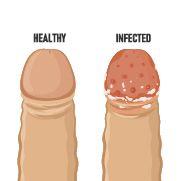Kidney Anatomy: Understanding the Human Kidney Structure
In This Article
Kidney Anatomy: Understanding the Human Kidney Structure
Jaseela
Updated on January 16, 2024
Medically verified by Dr. Arya
Fact checked by Dr. Pournami

Urology
6 min read
By now, you may already know a lot about kidney stones, kidney pain, and more. But are you aware of what the anatomy of the human kidney is like?
How do they exactly look inside your body? Or where exactly are they located? Do they have any layers or chambers like the heart? How do they function?
In order to understand the various kidney disorders, it is essential to have a basic idea of the human kidney structure. Mykare Health, in this blog, will take you back to your Biology classes in school. In order to give you a clarity through the kidney anatomy. Read on to know more.
What are Kidneys?
Kidneys are basically two bean-shaped organs in the renal system. They are often termed as the body's filtration system. Because, they help us to flush out waste in the form of urine.
Kidneys are found in the back of the abdominal cavity, below the rib cage. And one will be found on either side of the spine. Our right kidney is a bit lower than the left due to the position of the liver.
How Do The Kidneys Function?
Here’s how your body’s filtration system works. Your kidneys:
-
Filter and regulate minerals from blood before sending it back to the heart.
-
Produce hormones that support bone health, blood pressure regulation, and the production of red blood cells.
-
Filter waste materials from food, medicines, and other toxic substances.
-
Preserve the general fluid balance.
In adults, kidneys have an approximate size of a human fist or 10 - 12 cm length and 5-7 cm width with 150g weight. They play a major role in maintaining the internal equilibrium of a human body.
 6 min read
6 min readWhat is Stapler Circumcision - Everything You Need to Know
 8 min read
8 min readIs Circumcision Good or Bad - Here's How to Find Out
 8 min read
8 min readCircumcision - Scientific Guide to All Your Questions
Get a Callback Now
The Inside Of Your Kidneys
If you cut a kidney into two halves, you can see two different areas. One is darker and the other is light coloured. The dark coloured area of a kidney is called cortex while the light inner area is medulla.
Inside the medulla, there are between 10 and 18 renal pyramids. They are triangular structures with a striped appearance. This striped appearance is due to the renal tubules and their blood vessels.
The renal cortex and pyramids collectively constitute the renal parenchyma. Sounds complex? Parenchyma is basically the working centres of kidneys, where about one million nephrons are constantly doing their job.
When we are ready to pee, the urine leaves the kidneys to the bladder through a tube called urethra. In women, the urethra opens right in front of the vagina while in men, it opens at the tip of the penis.
External Structure
Here’s a glimpse of the external structure of your kidneys.
Renal Capsule: The renal capsule is a thick, fibrous covering that encases the kidneys. The fragile inner structures are protected from harm by this strong coating.
Renal Cortex: The majority of the kidney's vital processes start in the granular outer part of the renal cortex, which is located beneath the renal capsule. It has millions of small functional units called nephrons.
Renal Medulla: The renal medulla, which is located deeper within the kidney, is made up of conical formations known as renal pyramids. Tubules that transport urine from the nephrons to the renal pelvis are found in these pyramids.
Renal Pelvis: The renal pelvis, located in the middle of the kidney, gathers urine from the pyramids and moves it to the ureter, which then takes it to the bladder for storage.
Internal Anatomy
Here’s how the internal structure of your kidneys looks like.
Renal Corpuscle: The functional unit of the kidney, the nephron, begins with a renal corpuscle. It is made up of Bowman's capsule, a capsule like structure enclosing the glomerulus, which is a collection of capillaries. This is where blood is first filtered.
Renal Tubules: The collecting duct, distal convoluted tubule, loop of Henle, and proximal convoluted tubule are the names of the twisted pathways through which the filtrate from the glomerulus travels. During this trip, waste materials are concentrated to create urine, while necessary substances are reabsorbed.
There are three layers round the kidney that protect its tissue:
-
The renal capsule (fibrous capsule)
-
The perinephric fat (perirenal fat capsule)
-
The suprarenal gland and the fat that surrounds it are enclosed by the renal fascia, which also covers the kidneys.
The thinnest layer is a layer of fat tissue known as paranephric fat that is outside the fascia. This layer divides the kidneys from the abdominal wall muscles.
Blood Supply to the Kidneys
Have you ever wondered how the blood is supplied to the kidneys?
The kidneys have a large blood supply, contributing about 20% of the heart's output.
Blood that has been oxygenated by renal arteries is sent to the kidneys, where the nephrons filter the blood. The renal veins allow the purified blood to exit through the human body.
The purified blood from nephrons exits through the renal veins.
Lesser-known Facts About Kidneys
Here are some facts about kidneys which you may not know.
1. Shift in Kidney Location: Although most people's kidneys are located in the back, some people have abnormal kidneys. It means their kidneys are located in other parts of the body such as the belly, pelvis, or even the chest.
2. Regeneration Potential: Although not largely known, kidneys possess an amazing capacity of self-healing and regeneration. They are capable of healing and returning to normal after damage or injury.
3. Filtering Non-stop: Our kidneys filter continuously, even when we are asleep. Day and night, they work nonstop to filter our blood, eliminating waste and extra fluid.
The kidneys are essential for general health and wellbeing because they do so much for us - from balancing bodily fluids to filtering waste and controlling hormones.
The kidneys' complex structure reveals an engineering miracle of nature. Although these bean-shaped organs may appear tiny, they play a crucial part in preserving our general health. Every element of the kidney from the protective renal capsule to the nephrons, is essential for its amazing abilities.
Understanding the anatomy of the kidneys highlights how important it is to take good care of these essential organs
Kidneys are two bean-shaped organs, often termed as the body's filtration system. Because, they help to flush out waste through urine.
Major functions of kidneys are: Filtering & regulating minerals from blood producing hormones Filtering waste materials from food, medicines, toxic substances To maintain fluid balance.
Kidneys have an approximate size of a human fist or 10 - 12 cm length and 5-7 cm width with 150g weight.
The dark coloured area of a kidney is called cortex while the light inner area is medulla.
The dark coloured area of a kidney is called cortex while the light inner area is medulla.
The internal parts of the kidney are constituted by renal corpuscle and renal tubules.
The three layers protecting the kidney & its tissues are renal capsule, perinephric fat and renal fascia.



